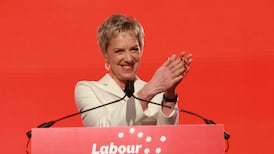The review carried out last year by the Higher Education Authority (HEA) confirmed what many commentators had observed for years: women are "vastly under-represented in top positions within the higher education sector."
While 52 per cent of entry-level academic positions are filled by women, they represent only 19 per cent of professorships (NUIG was cited at having the lowest proportion of women professors at 13 per cent while UL had the highest at 31* per cent). This disparity is all the more glaring when we consider non-academic positions: women occupy 72 per cent of the lowest paid positions in universities while men occupy the exact same percentage of the highest paid positions.
Although there are disparities between the universities, the issue of inequality in senior appointments cannot be said to be an isolated one pertaining to a small group of lecturers, one university, or a couple of seemingly skewed selection processes. It must be seen as an embedded feature of the culture of universities in Ireland.
Since the establishment of the very first Irish university 425 years ago, a woman has never been appointed as president of a university. Until that glass ceiling is broken, the implicit message for female academics is to curb your aspirations and find your place on the middle rung of the ladder.
Whatever the reality of the factors that influence the promotion process, the widespread perception among women is that the deck is stacked against them, with 64 per cent believing gender bias is prevalent in the sector. This discourages many from applying for senior positions in the first place or leads to the “leaky pipeline” phenomenon in some areas where it is difficult to retain female talent.
A new approach is clearly required – one which will appear to many as radical. The HEA’s expert group has called for the final pool of candidates for the appointment of new presidents to be comprised, in so far as possible, equally of men and women. They also call for all candidates for presidential appointments to be able to demonstrate experienced leadership in advancing gender equality as a key recruitment criterion.
The introduction of mandatory quotas for academic promotion, based on the flexible cascade model where the proportion of women and men to be promoted is based on the proportion of each gender at the grade immediately below, would guarantee that many more women progressed to professorships and senior management roles.
At Maynooth University, we are currently taking several steps to respond to the HEA report and fundamentally address gender across the board. Maynooth has led the way in addressing gender inequality for many years, and we rank among the top performers in the sector in appointing women to senior roles; however, the urgency of this issue requires even more proactive change and leadership.
There is also much more to be done in transforming how we define “excellence”, the impact of motherhood on female academics, unconscious bias in research practices and equality training. Research funding bodies, such as SFI and the IRC, are set to introduce funding penalties if gender inequality is not addressed. There is much at stake.
Maynooth University recently committed to applying for accreditation in the next round of Athena Swan, the leading international award scheme for positive gender practice in higher education.
Achieving this will require the design and implementation of a comprehensive three-year gender equality action plan.
Irish universities should welcome this challenge and not duck away from asking hard questions of our academic institutions. Extensive international research shows that gender equality is good for academic institutions and can only enhance the performance of the sector in Ireland, significantly. A change more than 425 years in the offing will require absolute commitment.
Prof Linda Connolly is Director of Maynooth University Social Sciences Institute (MUSSI). On Wednesday, February 22nd, Maynooth is hosting an event, “Gender Equality Initiatives in Irish Universities: Prospects and Possibilities”
* This article was edited on February 22nd, 2017








